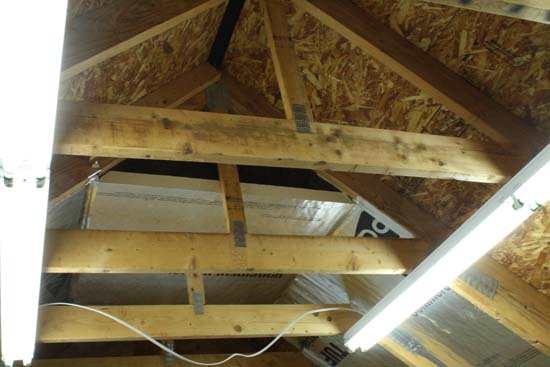Foam board insulation in the attic can cut down on energy costs and simultaneously promote a more environmentally sound way of daily living.
Putting 1 foil faced ridig board under attic roof.
Then a second layer of plywood sheathing and asphalt shingles following the steps explained in this article.
Foam insulation boards are the best material with which to work when undertaking a do it yourself project because foam.
Cut ap foil faced foam sheathing to fit snuggly between the rafters.
Foil insulation is a radiant barrier and it works by.
The r value of the insulation must meet local building code requirements for unvented attics to prevent condensation.
Installing rigid foam insulation.
Multiple layers of foam board may be required.
If you want to use them without creating a vapor barrier look for permeable iso panels faced with fiberglass.
2 measure and cut the foam boards as.
Foil insulation underlayment is recommended under a metal roof and in most cases the shiny side should be facing up but there s a catch.
Select rigid foam insulation boards that are at least 1 2 inch less in thickness than the rafter space is deep if you plan to finish the attic as living space.
We live in zone 5 suburb of chicago and are hopefully about to put rigid foam above the roof sheathing on just the northeast roof portion of our roof.
Installing foam insulation boards in the attic is no that hard and can save you money compared with professional installation.
Install ap foil faced foam boards between rafters directly against the bottom of the roof sheathing.





























